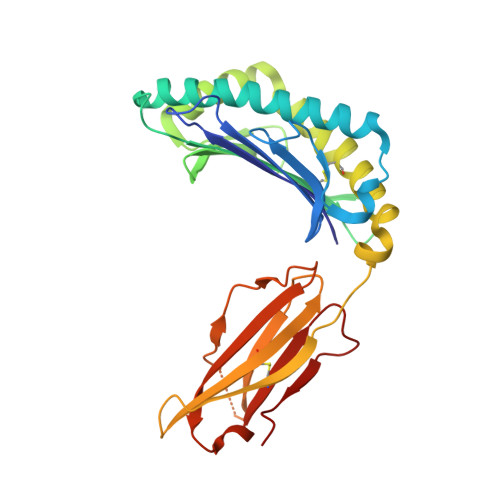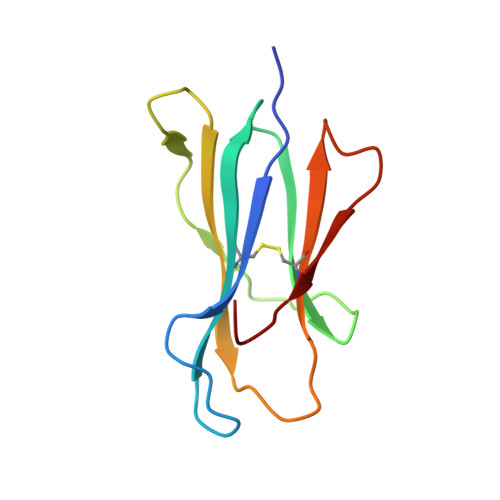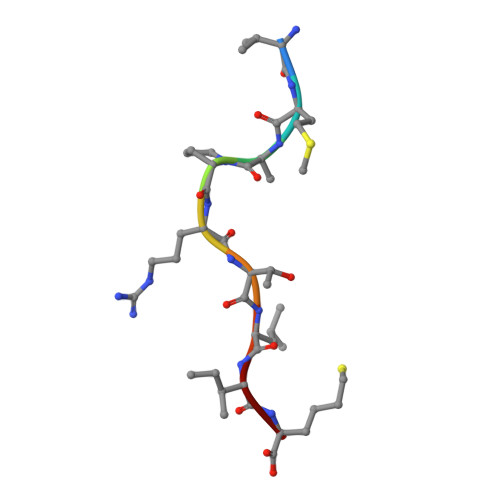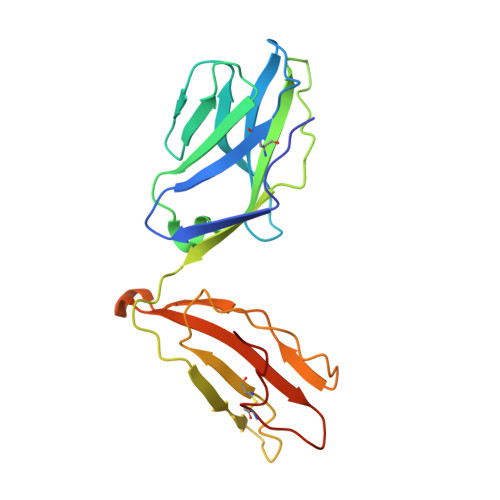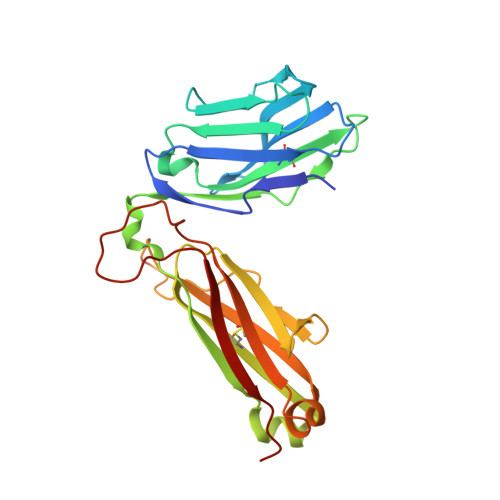Structure-guided stabilization of pathogen-derived peptide-HLA-E complexes using non-natural amino acids conserves native TCR recognition.
Barber, C., De Souza, V.A., Paterson, R.L., Martin-Urdiroz, M., Mulakkal, N.C., Srikannathasan, V., Connolly, M., Phillips, G., Foong-Leong, T., Pengelly, R., Karuppiah, V., Grant, T., Dembek, M., Verma, A., Gibbs-Howe, D., Blicher, T.H., Knox, A., Robinson, R.A., Cole, D.K., Leonard, S.(2022) Eur J Immunol 52: 618-632
- PubMed: 35108401
- DOI: https://doi.org/10.1002/eji.202149745
- Primary Citation of Related Structures:
6ZKW, 6ZKX, 6ZKY, 6ZKZ, 7NDQ, 7NDT, 7NDU - PubMed Abstract:
The nonpolymorphic class Ib molecule, HLA-E, primarily presents peptides from HLA class Ia leader peptides, providing an inhibitory signal to NK cells via CD94/NKG2 interactions. Although peptides of pathogenic origin can also be presented by HLA-E to T cells, the molecular basis underpinning their role in antigen surveillance is largely unknown. Here, we solved a co-complex crystal structure of a TCR with an HLA-E presented peptide (pHLA-E) from bacterial (Mycobacterium tuberculosis) origin, and the first TCR-pHLA-E complex with a noncanonically presented peptide from viral (HIV) origin. The structures provided a molecular foundation to develop a novel method to introduce cysteine traps using non-natural amino acid chemistry that stabilized pHLA-E complexes while maintaining native interface contacts between the TCRs and different pHLA-E complexes. These pHLA-E monomers could be used to isolate pHLA-E-specific T cells, with obvious utility for studying pHLA-E restricted T cells, and for the identification of putative therapeutic TCRs.
Organizational Affiliation:
Immunocore Ltd, Abingdon, Oxfordshire, UK.








